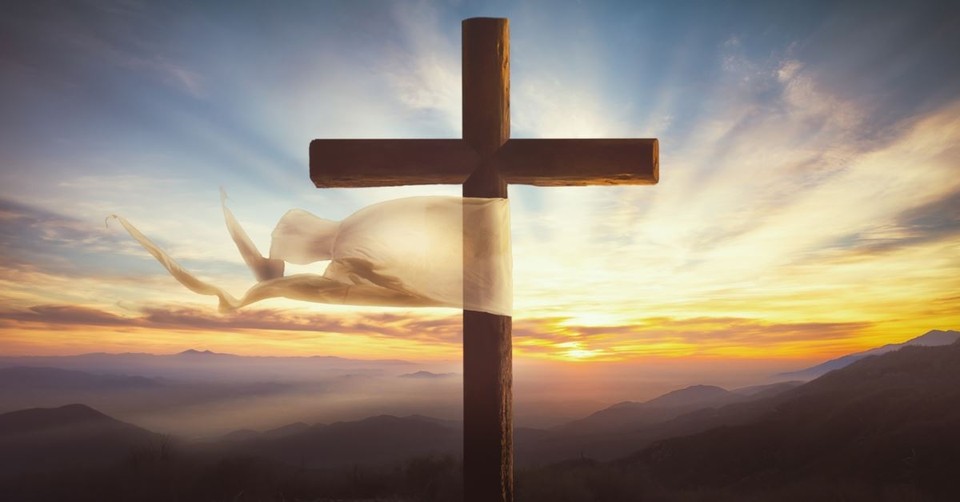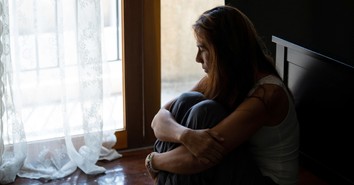The Easter Story - Important Facts All Christians Need to Know

Easter tells the powerful story of Jesus Christ’s death and resurrection. He gave His life on the cross to save humanity from sin, then rose from the grave three days later, conquering death. This story is the foundation of the Christian faith and a message of hope, love, and new life.
Get your FREE Easter Guide here. Have encouragement delivered straight to your inbox!
Quick Facts About the Easter Story
- The Easter Story typically begins with Jesus being arrested, beaten, and crucified between two criminals. His death served as a sacrifice to atone for the sins of humanity.
- After His death, Jesus's body was wrapped in linen and placed in a rock-hewn tomb by Joseph of Arimathea. A large stone sealed the entrance, and guards were stationed to watch over it.
- On the third day, women visiting the tomb found the stone rolled away and were informed by an angel that Jesus had risen from the dead. They shared this news with the disciples.
- Forty days after His resurrection, Jesus ascended into heaven in the presence of His disciples, completing His earthly ministry.
- Jesus's crucifixion and resurrection occurred during Passover, fulfilling Old Testament prophecies and symbolizing Him as the ultimate sacrificial Lamb.
- The resurrection is central to Christian faith, affirming Jesus as the Son of God and offering believers the hope of eternal life.
What is the Easter Story?
On Easter, or Resurrection Sunday, we celebrate what is arguably the most important event in all of human history: Jesus rising from the dead. All of Christianity and all eternity hinges on the truth of the resurrection. If Jesus did not rise from the dead, then our faith is lacking in meaning and is just another interesting philosophy. But if the resurrection is true, then it is the clearest proof that Jesus is exactly who he claimed to be – the Son of God and the Savior of the world. All of the evidence points to the truth of the resurrection, and the result is changed lives. Let's dive into both the big and seemingly smaller events of the story of Easter, and understand how each is significant to the entire redemption story.
Jesus's Crucifixion on the Cross
Jesus Christ was arrested, beaten, and sentenced to die on a cross. He was crucified between two criminals and died after hours of suffering. His death was a sacrifice to take away the sins of the world.
The Burial of Jesus Christ
After Jesus died on the cross, His body was taken down and wrapped in linen cloth. A man named Joseph of Arimathea placed Him in a tomb carved out of rock. A large stone was rolled in front of the entrance, and guards were posted to watch over it.
The Apparitians
On the third day after Jesus died, some women went to His tomb and found the stone rolled away. An angel told them that Jesus had risen from the dead. Filled with awe and joy, the women ran to share the good news with the disciples.
The Ascension of Christ to Heaven
After rising from the dead, Jesus spent forty days with His disciples, teaching them and preparing them for their mission. He then led them to a hill outside Jerusalem. There, Jesus was taken up into heaven while they watched, and a cloud hid Him from their sight.
Why is the timeline of Easter important?
“Do you think I cannot call on my Father, and he will at once put at my disposal more than twelve legions of angels? But how then would the Scriptures be fulfilled that say it must happen in this way?” Matthew 26:53-54
Immediately before the crucifixion and resurrection, Jesus sat at the Passover meal with his disciples and explained how the meal represented not only the past, but also what was about to happen in the following days. Jesus had to make the ultimate sacrifice at the time of Passover. He also had to be taken down from the cross before sunset, because this was the beginning of the Sabbath. Each event fit inside a larger picture of what God had been doing through his people for centuries and set the stage for what he had planned for the next few thousand years.
Holy Week Leading to Easter
The Last Supper
“Do this in remembrance of me.” Luke 22:19
Christians everywhere celebrate what we call ‘communion’ or the ‘Lord’s Supper’ because of what happened the night before the crucifixion. Jesus and his disciples were celebrating the Passover together, and a small part of this observance involves drinking a cup and the breaking and eating of unleavened bread. The entire observation of Passover is a remembrance of how God delivered the Jewish people out of slavery in Egypt, and each element is a symbol of that. As they celebrated this meal, Jesus reaffirmed the original meaning of deliverance from physical slavery while adding to it the meaning of freedom from spiritual slavery. His broken body is represented in the bread, and his blood in the cup. In him and through his sacrifice, the symbolism has now been fulfilled.
Garden of Gethsemane
"Father, if you are willing, take this cup from me; yet not my will, but yours be done." Luke 22:42
The garden of Gethsemane is a grove of olive trees that is still there today. Some of the trees are over 2,000 years old and would have been young trees at the time Jesus was there on the night he was arrested. Located in Jerusalem, the Temple Mount is just a short walk away across the Kidron Valley. As Jesus prayed in the garden, he could see the temple, and could likely hear the hustle and bustle of people gathering for the Passover.
It is here that he prayed the most agonizing prayer ever to be lifted up. After the Last Supper with his disciples, he took them out to pray in the garden where he predicted Peter’s denial and prayed for God’s will to be done in him.
The Trial of Jesus Christ
“And they began to accuse him, saying, ‘We have found this man subverting our nation. He opposes payment of taxes to Caesar and claims to be Messiah, a king.’” Luke 23:2
Jesus went through several trials, and all of them were legally out-of-line, even by ancient standards. His first trial was before the Sanhedrin, the leading council of Israel, where he was charged with blasphemy for claiming to be God. The meeting of the council was called at night, and all the witnesses brought against Jesus were poor witnesses at best.
The council had no authority to sentence him to death, so they brought him to Pilate, the Roman governor who held that power. Pilate found no cause for getting involved in what he saw as a local religious dispute, so when he found out that Jesus was from Galilee, he sent him off to Herod, the leader of Galilee, who was also in Jerusalem for the Passover. Before Herod, Jesus was mocked and beaten and then sent back to Pilate. Pilate finally allowed his crucifixion in order to “satisfy the crowd” (Mark 15:15).
There was no legal reason for Jesus to be crucified. He had not blasphemed or opposed paying taxes. Yet, it was God’s will that Jesus die on our behalf to take away our sin. There was no stopping the plan of God, no matter how painful. Out of this pain and even in this dark hour, a path was being laid for the resurrection and the glorious hope of eternal life and triumph over the grave.

Photo Credit: GettyImages/shutterjack
Originally published March 02, 2020.







